There can be your advertisement
300x150
Budget Renovation Doesn't Mean Poor Quality: Secret Tips for Saving Money Without Sacrificing Standards
Proven solutions from real renovation
Watch all episodes of Repair Drive here:
- Episode 1: Bought a ruined Stalin-era apartment – what went wrong?
- Episode 2: Relocation: What solution saved our Stalin-era apartment?
- Episode 3: Expensive renovation mistakes.
- Episode 4: How to stay within a 3 million budget? Finishing work.
In our second episode of "Repair Drive" with Ksenia Shakhmatova, we continue transforming a typical Stalin-era apartment 205 series, setting an ambitious goal: to achieve quality renovation of a 80 m² three-bedroom apartment without breaking the bank. "There's no way out, you understand? You set a goal and just go towards it. There is no chance of not achieving it," – Ksenia approaches budgeting with such ironclad confidence. Today we reveal all our cards: how to do renovation that doesn't look cheap, but also doesn’t break the owner's wallet? Where can you save without compromising quality? What is reasonable minimalism in finishing work? All of this and more – in our article.
Main points from the article:
Quality renovation of a Stalin-era apartment is really possible without an exorbitant budget in 2025;
Proper allocation of funds is more important than the size of the budget – 60% for rough work, 30% for finishing, 10% reserve;
Smart layout allows creating a functional space without extra costs;
In some cases, it's better to give up trendy trends in favor of practical solutions;
A professional approach to renovation can save up to 20-30% of the budget without sacrificing quality.

The myth of "expensive = good": examining stereotypes
Most people are accustomed to thinking that quality renovation cannot be cheap. Marketers and glossy magazines have hammered into our heads for decades: if you want it good, prepare a big budget. But is this really the case?
"I'm known in narrow circles as the queen of economy," – Ksenia Shakhmatova admits. "I work in panel buildings on Moscow's outskirts. And it's exactly those apartments we can easily handle – 40- and 45-meter ones".
Ksenia dispels the main myth: expensive renovation doesn't always mean good, and budget renovation isn't necessarily bad. It all depends on the approach and understanding where you can save, and where it's absolutely not worth saving.
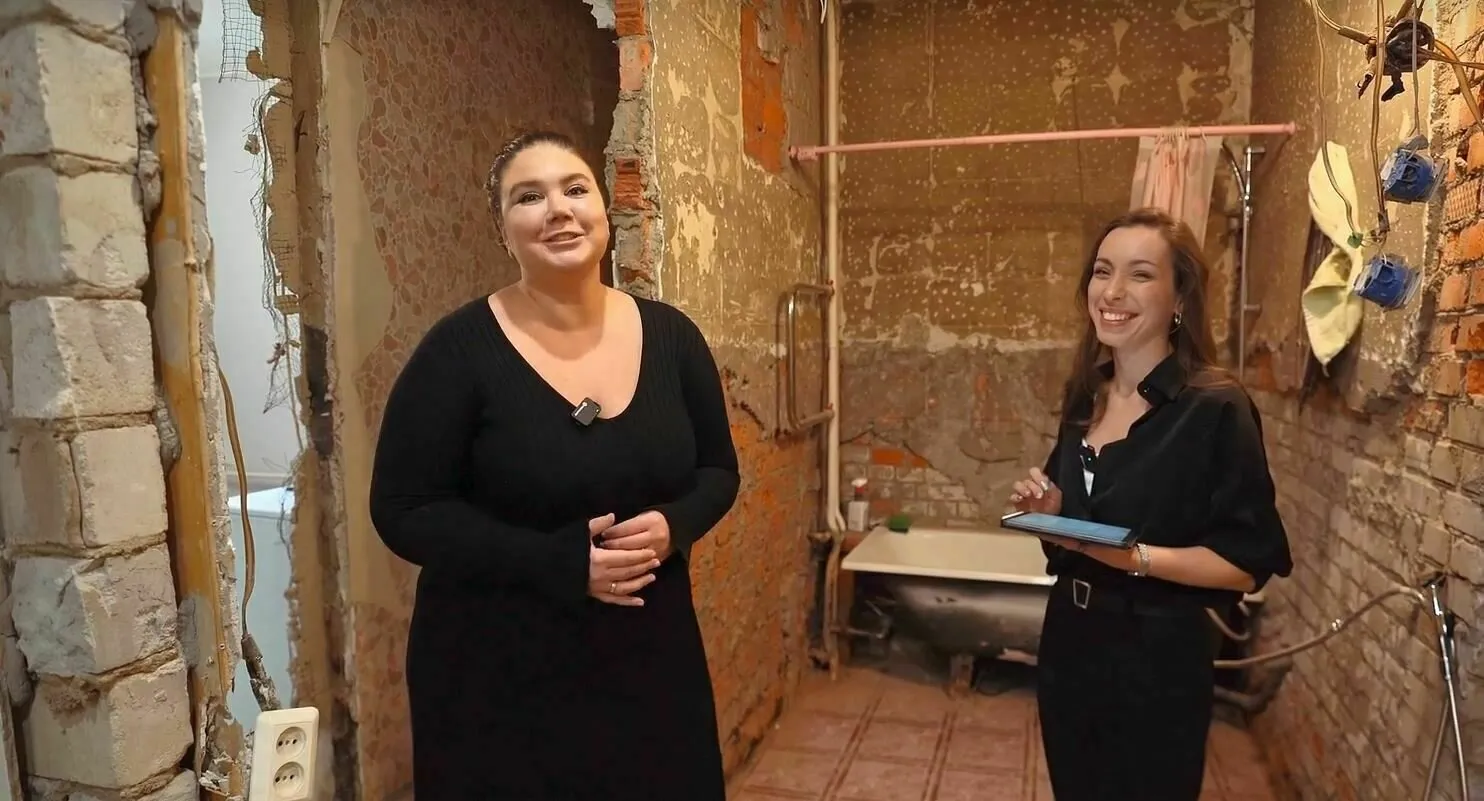
Square meter in numbers: how much does professional work cost
The first thing to understand when planning a budget is the real cost of the work. Many developers and renovation companies intentionally lower this figure, then add hidden expenses.
"We try to keep the standard at 10,000 per square meter," – Ksenia openly says. "So for 77 m², we'll pay only 770,000 to workers for the full range of work".
This is a fair price for the complete set of works:
Demolition;
Preparation of all surfaces;
Laying new finishes;
Painting work;
Tiling;
Plumbing;
Electrical work.
This openness in pricing immediately eliminates the question of "hidden markups" and helps realistically assess renovation costs.
Fundamentals of saving: smart space planning
The first and most important step in an economical renovation is space planning. This is where up to 30% of potential savings are laid.
In our project, we encountered a standard problem with Stalin apartments – an inconvenient layout of the corridor and entrance areas. "Our entrance into this room, which is called a dirty zone, is passable, so people undress here and then go to sleep or to the living room or children's room," – Ksenia explains.
The solution was found not through expensive demolition of load-bearing structures, but with smart space redistribution:
Moving the entrance to another side of the room: "We will make the entrance into this room from here. But we have decided to also make this room isolated".
Creating a storage system instead of expanding the area: "There will be a complex of wardrobes for storage, we'll take some meters from this room here and there, one wardrobe to that side, another to this".
Separating movement flows in the apartment for more functional use of space.
This approach not only solved the problem of pass-through rooms but also significantly increased the functionality of the apartment without expensive re-planning with moving load-bearing structures.
Engineering solutions: how to save on utilities
Engineering systems are the part of renovation where unskilled saving can lead to catastrophe, while a well-thought-out approach saves significant funds.
Electrical work: the principle of "one socket per square meter"
"In our projects, we usually have one socket per 1 m², even though it sounds crazy," – Ksenia explains. This is not luxury but necessity, allowing to avoid using extension cords and power strips that could lead to fire.
Economy is achieved through:
Laying the wiring during rough work (instead of grooving already finished walls);
Proper planning of electrical groups;
Using quality but not necessarily premium components.
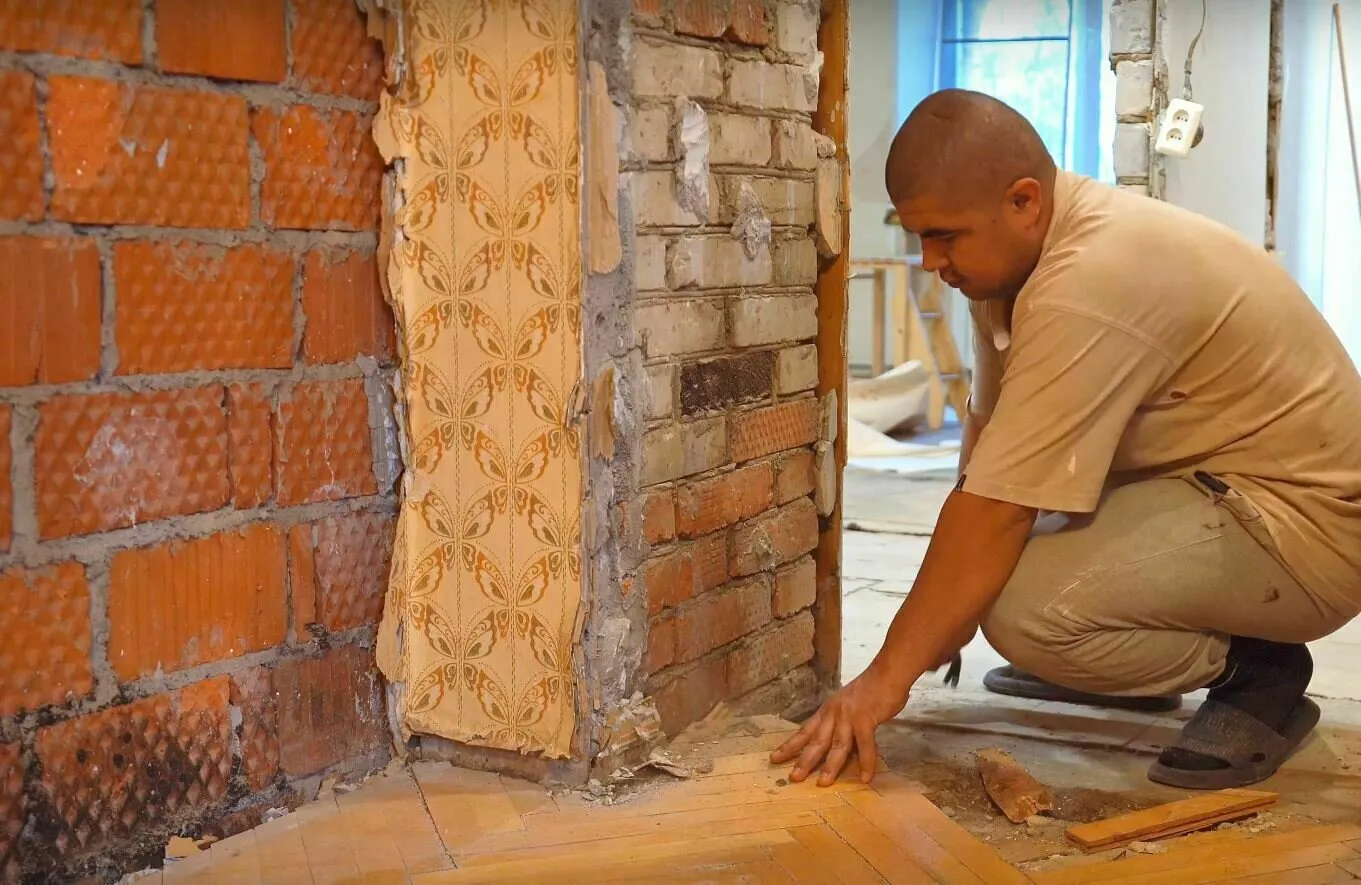
Plumbing: two bathrooms instead of one
One of Ksenia's innovative ideas is creating a second bathroom even in limited space: "This is my concept – to give people two toilets. I think they will be grateful to me".
Economy is achieved through:
Close proximity of bathrooms to each other: "We will make a tee and a double. In principle, as we placed them, it should be minimal damage because they are very close to each other".
Using compact plumbing: "For the sink, for a large normal sink we also want to put a small one here, just to wash hands, about 15 cm by 20".
Expanding the bathroom at the expense of the corridor instead of complex re-planning: "The corridor is wide enough. So we can add some space here. Bathroom expansion using the corridor area is possible".

Finishing materials: where to save, and where not
The choice of finishing materials is the place where many make critical mistakes: either they save on everything, or overpay for brands without real necessity.
Walls: minimalism with character
"On the floor, there is laminate, here a carpet may be shown. Maybe there will be room for a carpet too. You know, when we approach decoration, it’s already counting in kopecks. If there is enough for a carpet, maybe it will appear here, but we can’t guarantee that," – Ksenia honestly admits.
Economy on wall finishing is achieved by:
Using painter's vinyl instead of expensive textured wallpapers: "We just need to understand if we will use painter's vinyl, it is a kind of variation, and wallpapers for painting are simply non-textured";
Focusing on the quality of painting, not the cost of material;
Creating one or two accent elements instead of expensive finishing on all walls.
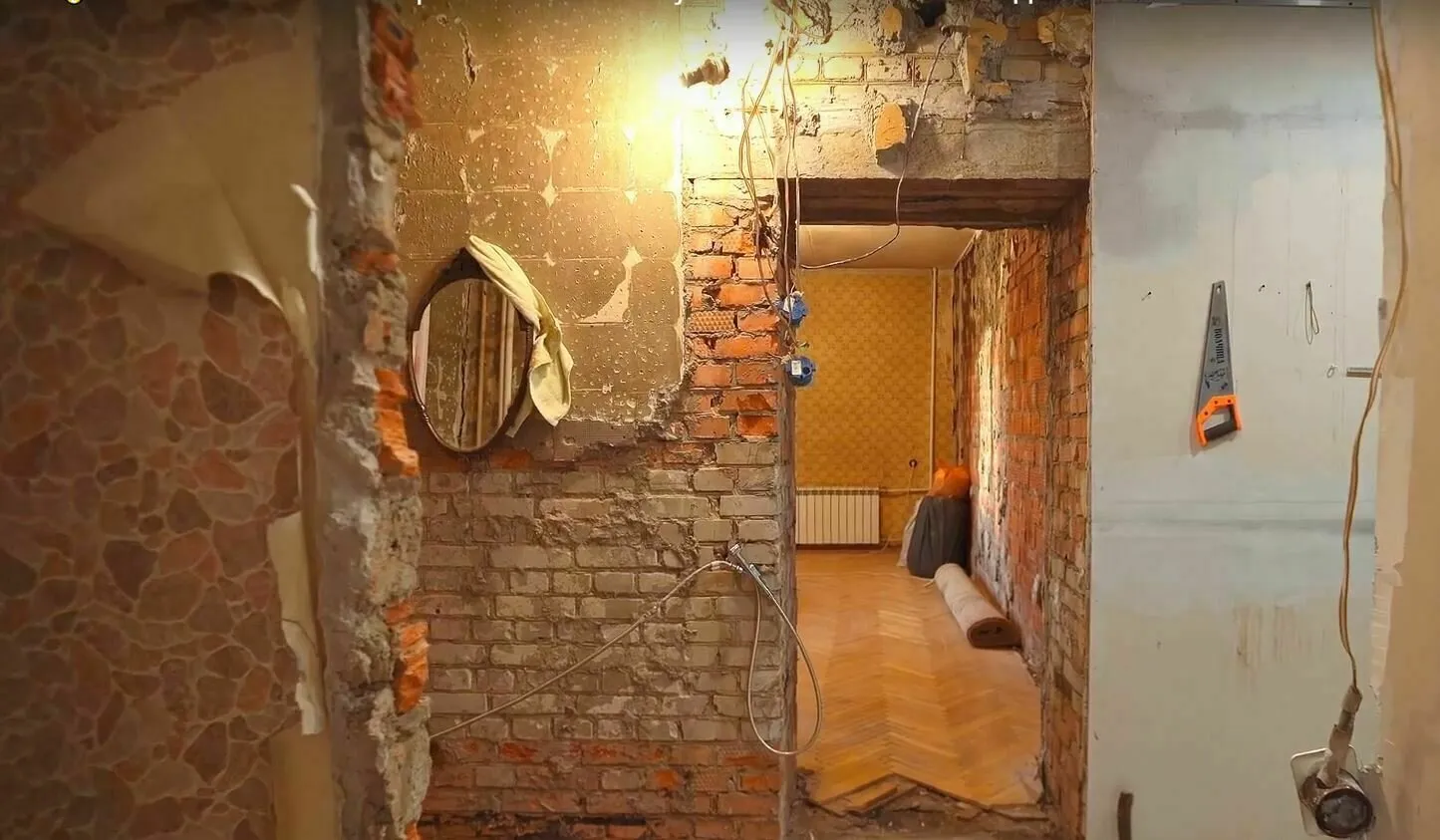
Kitchen: functionality first
In the kitchen, we faced a serious issue – a massive gas pipe that couldn’t just be embedded. The solution was found in creating a false wall with access and a special kitchen cabinet.
"Have you ever seen a kitchen cabinet? These are cabinets with doors that open. I want to make such a cabinet," – Ksenia shares her idea.
She also immediately answers the question about cost: "Expensive! Well, we want to find a way to make this not cheap. You know, everything is expensive, but you can find expensive tomatoes for 900 rubles or for 150. It's just a matter of search and cost optimization".
Economy in the kitchen is achieved through:
Preserving existing layouts of utilities;
Integrating existing elements into the new design instead of replacing them;
Creating multifunctional elements: "The countertop will be integrated, instead of the windowsill".
Time factor: proper organization of work
Proper organization of the renovation process is another source of significant savings. Ksenia shares her approach to timelines:
"It's now mid-January. I would really like to finish by April 1st. So that’s about 2.5 months to complete".
Such ambitious timelines allow saving on:
Renting temporary housing during renovation;
Worker payments (fewer days – less hourly pay);
Overhead costs (delivery, storage of materials).
But Ksenia is realistic: "But honestly, there might be some surprises. I easily handle 40-meter apartments – they are like nuts to crack. The previous 80-meter apartment took 3.5 months, because some complications arose".

Strategy for purchasing materials: smart approach to logistics
The traditional process of material procurement looks like this: trips to stores, price comparison, organizing delivery – all of it takes a lot of time and nerves. Ksenia offers an alternative approach:
"Why go anywhere else in Moscow, waste time? I'll order everything on Yandex Market," – she says when asked about going to get materials.
Advantages of online ordering:
Saving time on trips to stores;
Easy comparison of prices from different suppliers;
Access to reviews by other buyers;
Convenient financial tools: "On Yandex Market, you can pay in installments, split payments, so the payment term can be chosen".
Conscious refusal of trends in favor of practicality
One of the main articles on saving is refusing to blindly follow fashion trends in favor of functional solutions.
"We conducted a market analysis and decided that three separate rooms would still be in demand. Nowadays, many people host guests, so there's a need for combined kitchens and living rooms in houses, which is practically nonexistent," – Ksenia explains her decision not to combine the kitchen with the living room, which allowed saving on:
Demolition of load-bearing structures;
Increase in ventilation power;
Re-planning of electricity and utilities.
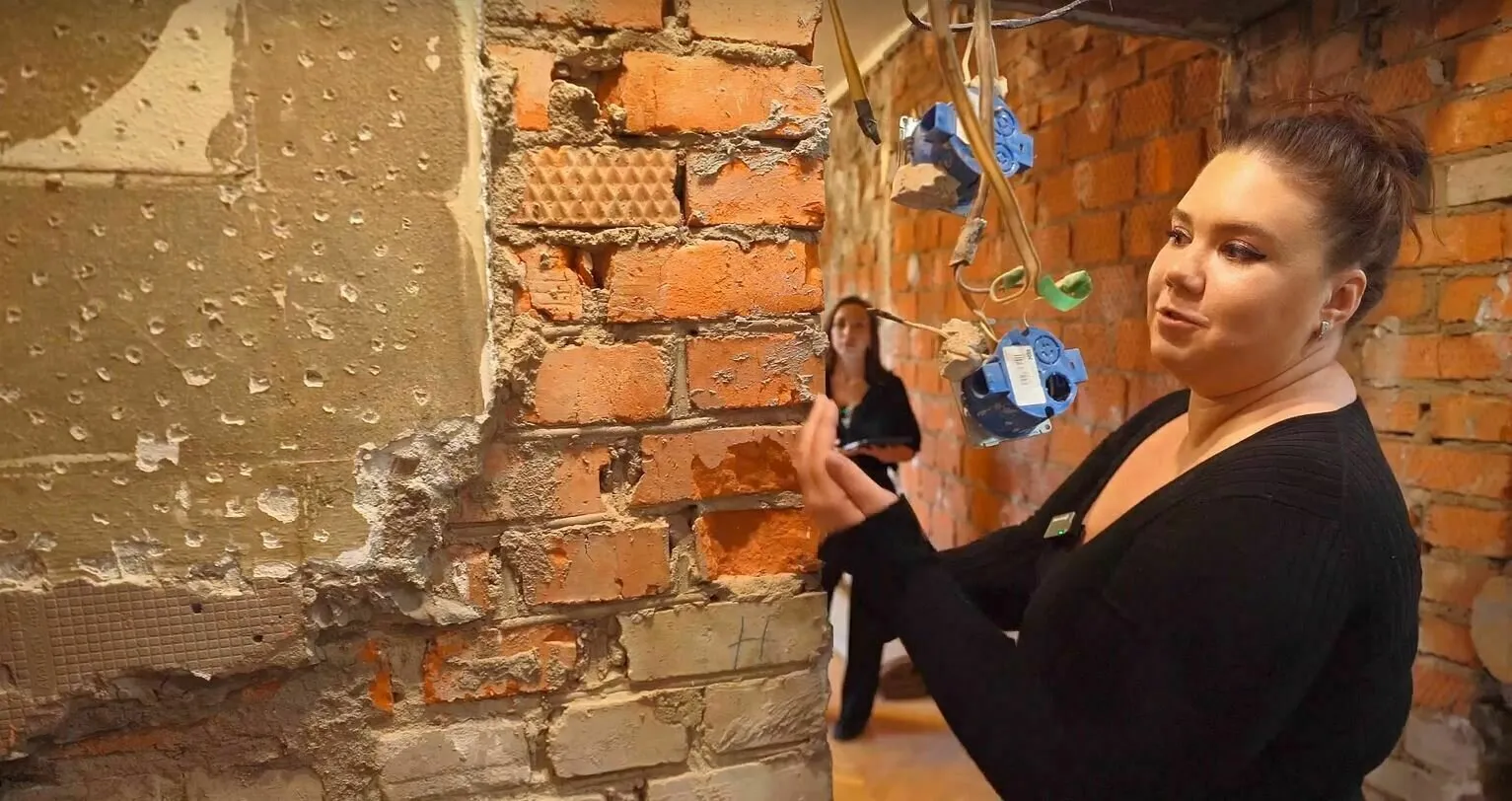
Design solutions: balance between aesthetics and cost
In working with a designer, Ksenia found an interesting compromise between the desire to create a stylish interior and striving to stay within the budget:
"I understood what she meant. Her idea was normal, to create a light interior, but nobody is to blame that I have a gypsy-Armenian soul. Let's call it that. So there is a desire for something like jade, some burgundy".
Instead of expensive materials and complex finishing, Ksenia suggests:
Using color as the main tool for creating ambiance;
Adding accent elements to a basic neutral interior;
Applying point design solutions in areas of main visibility.
Saving on small things that add up to big sums
A professional approach to renovation requires attention to details that, in total, provide significant savings:
Optimizing material costs: "We will cover the entire wall with gypsum board, we'll have a false wall. With access!" – such a solution costs less than relocating utilities.
Multi-functionality of elements: "The countertop will be integrated instead of the windowsill" – one element performs two functions.
Reasonable minimalism: "But you see, the windowsill is very wide, about 50 cm. Making another 60 cm countertop as usual would be silly" – refusal of excess in favor of rational solutions.
Why you should trust professionals even with a limited budget
Many think that with a limited budget, it's better to do renovation yourself or hire an inexperienced cheap crew. Ksenia proves the opposite:
"I want people to know and possibly apply this to themselves: that budget renovation is possible. And maybe someone who fears renovation will watch and understand it's not so scary. And following a step-by-step instruction, they can also repeat this at home".
A professional approach allows:
To avoid expensive mistakes and rework;
Optimize the sequence of work;
Find unconventional solutions to complex problems;
Properly distribute the budget between different types of work.
Golden rules for budget renovation from Ksenia Shakhmatova
Honestly assess your financial capabilities: don't try to do a renovation that clearly exceeds your budget. It's better to renovate part of the apartment well than badly all.
Invest in the foundation, save on decor: don't economize on what is hard to change (flooring, electrical work, plumbing), but you can save on what's easy to replace (curtains, light fixtures, furniture).
Look for alternative solutions: expensive materials often have more accessible analogs with similar characteristics.
Plan ahead and in detail: spontaneous decisions and rework are the main source of budget overruns.
Don't chase trends just for the sake of it: trendy solutions often require large costs and quickly become outdated.
Use modern technology and marketplaces: online purchases and price comparison allow substantial savings.
Hire professionals for consultation at least: even a paid consultation by an expert can save a significant amount later.
Budget renovation is not about cheap materials and saving everywhere. It's about reasonable resource allocation, prioritizing tasks, and paying attention to details. As Ksenia Shakhmatova's experience shows, even with a limited budget, it is possible to create space that will be not only functional but also aesthetically pleasing. The key is approaching the process with wisdom and not being afraid to seek unconventional solutions.
More articles:
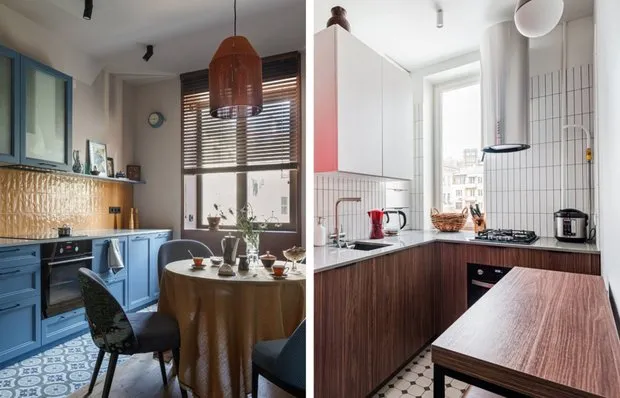 What Kitchens Designers Make for Themselves: 5 Great Examples
What Kitchens Designers Make for Themselves: 5 Great Examples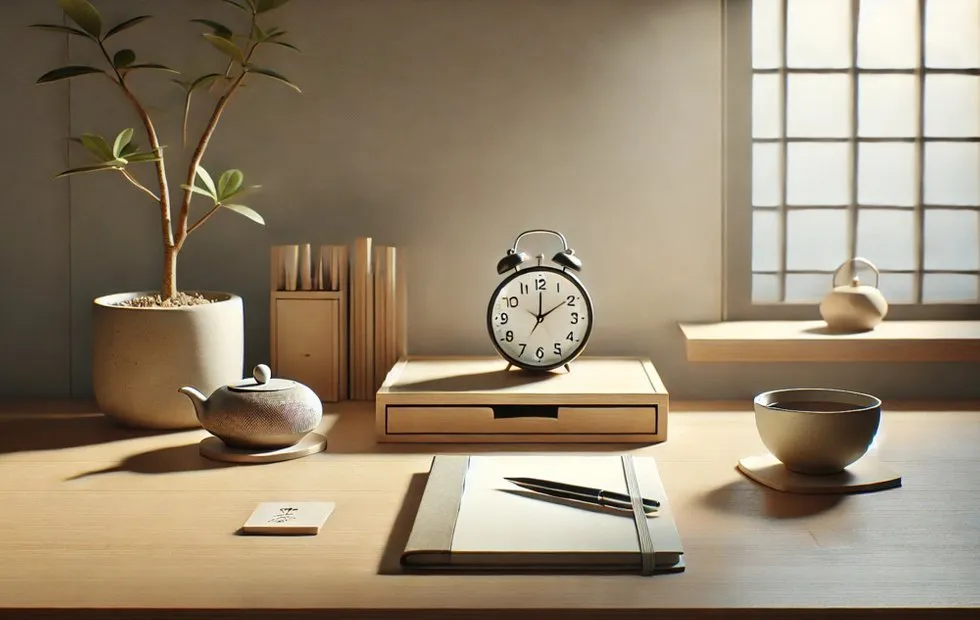 I Set One Simple Rule and Now I Get Twice as Much Done: How a Japanese Method Changed My Day
I Set One Simple Rule and Now I Get Twice as Much Done: How a Japanese Method Changed My Day Before and After: A Cool Renovation of a Terrifying Bathroom in a Secondary Apartment
Before and After: A Cool Renovation of a Terrifying Bathroom in a Secondary Apartment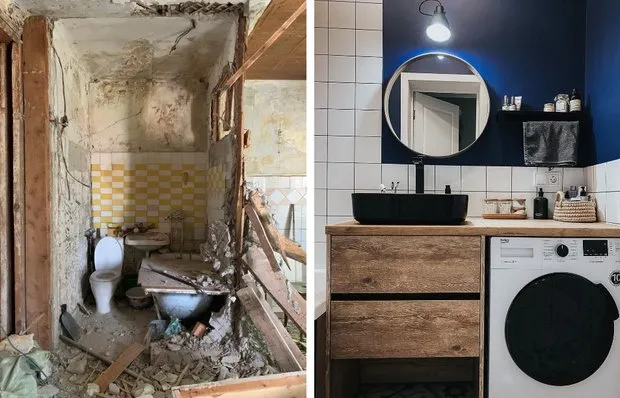 Compact Bathroom Before and After: 5 Examples of How Everything Fits in 3 m²
Compact Bathroom Before and After: 5 Examples of How Everything Fits in 3 m²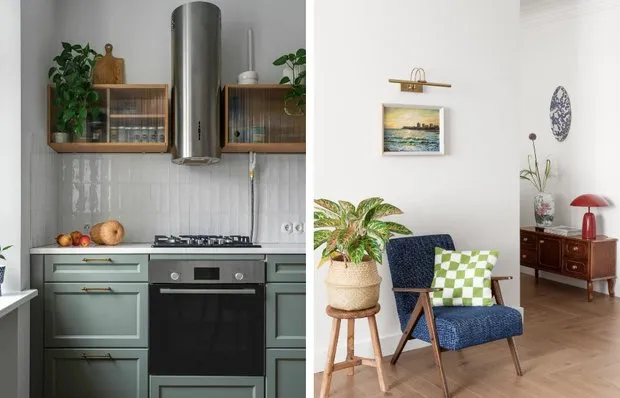 How to Make Interior Visually More Expensive: 6 Simple Tips from Designers
How to Make Interior Visually More Expensive: 6 Simple Tips from Designers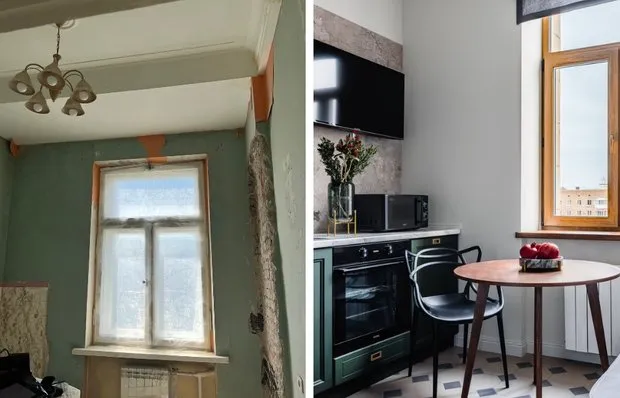 How We Transformed a Small Kitchen in a Stalin-era Apartment 36 m² (Before and After)
How We Transformed a Small Kitchen in a Stalin-era Apartment 36 m² (Before and After)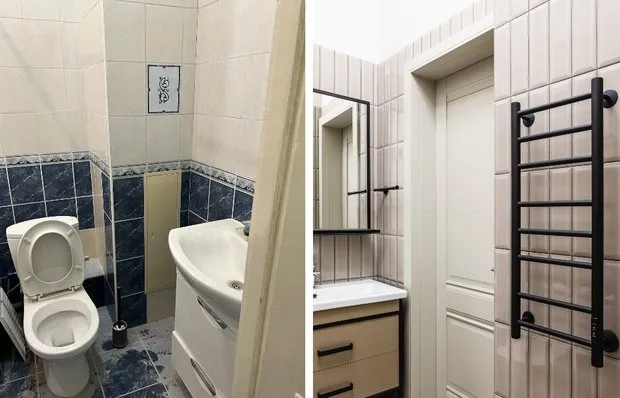 Bathroom in a Small Studio Apartment: 5 Inspirational Ideas
Bathroom in a Small Studio Apartment: 5 Inspirational Ideas Visiting El Herwin: Classic with Modern Accents
Visiting El Herwin: Classic with Modern Accents